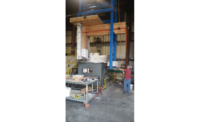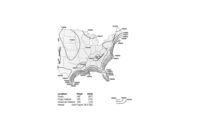ENR's 2017 Top 25 Newsmakers
Fanning the Flames for Structural Fire Engineering

On Jan. 9, the American Society of Civil Engineers approved for publication its first manual of practice for performance-based structural fire engineering. For Kevin J. LaMalva, the structural and fire-protection engineer who led the volunteer effort for the ASCE manual, the approval represents a milestone along the road toward legitimizing PBSFE in the U.S.
“We are very excited,” says LaMalva, a senior staff consultant at Simpson Gumpertz & Heger Inc. and, since 2014, chairman of the fire-protection committee of the ASCE Structural Engineering Institute (SEI). “I know this is a technology that has far-reaching benefits.”
 Kevin J. LaMalva
Kevin J. LaMalva
Boston
ENR 2/6/17 p. 16
Engineer, a linchpin in the creation of the nation’s first standard and how-to manual on structural fire design, is energizing the discipline.
At age 33, when many of his engineer peers are just beginning to clear their throats, LaMalva is acknowledged as the voice of PBSFE in the U.S. “Kevin is bringing a lot of energy” to the cause, says Therese P. McAllister, a former fire-research structural engineer for the National Institute of Standards and Technology and a co-author of the manual. “He designs, understands analysis, codes and practice, participates in organizations and listens to all sides to reach consensus,” adds McAllister, who became NIST’s community resilience group leader in late 2015. “It’s a nice balance.”
The manual is a companion piece to the first U.S. engineering standard to consider fire effects as an explicit design load on a structure. McAllister and LaMalva co-led the effort to develop the standard, which made its debut last year as a voluntary reference standard in the 2018 model International Building Code. Called Appendix E, the nonmandatory standard is part of the 2016 edition of ASCE/SEI’s widely used structural design standard, “Minimum Design Loads and Associated Criteria for Buildings and Other Structures.”
“Prior to Appendix E being adopted by ASCE, there was a lack of U.S. guidance” for PBSFE procedures, though “there were bits and pieces” in other standards, says McAllister.
Though the appendix gives PBSFE objectives and goals, the manual is a “how to” for structural engineers, says Maria E. Garlock, a professor of civil engineering at Princeton University. In her former role as chair of the ASCE/SEI fire-protection committee, Garlock was the catalyst for Appendix E.
“Kevin, who was then new to the committee [in 2012], emerged as the enthusiastic participant, working diligently with myself and Terri on the appendix,” says Garlock, also a manual co-author. “He then mobilized the committee for the manual of practice, which is impressive because it is all volunteer work,” she adds.
With the manual approved for publication, likely this summer, LaMalva is on to other projects to elevate PBSFE. Spreading awareness of the new standard of care tops his list. This is important to LaMalva because it is related to curtailing improper intermingling of standard fire-resistance design—using code-prescriptive methods—and structural fire engineering to justify structural fire-protection variances. LaMalva says the variances allow the removal of fire protection from steel structures without proper structural analysis.
Next, LaMalva’s aim is to revise fire-resistance-rating terminology in codes. “We seek to transition ratings to an alphabetical classification system to help dispel major misconceptions concerning the significance of hourly ratings,” he says.
Another of LaMalva’s projects is code reform to incentivize the adoption of structural fire engineering for buildings with high consequences if they fail in a fire, such as buildings taller than 420 ft. But LaMalva’s overarching goal is to disrupt, in a good way, a century-old mindset within structural fire protection. He says,“Our efforts are not to replace the long-standing empirical indexing method but to provide stakeholders a regulated engineered alternative.”




